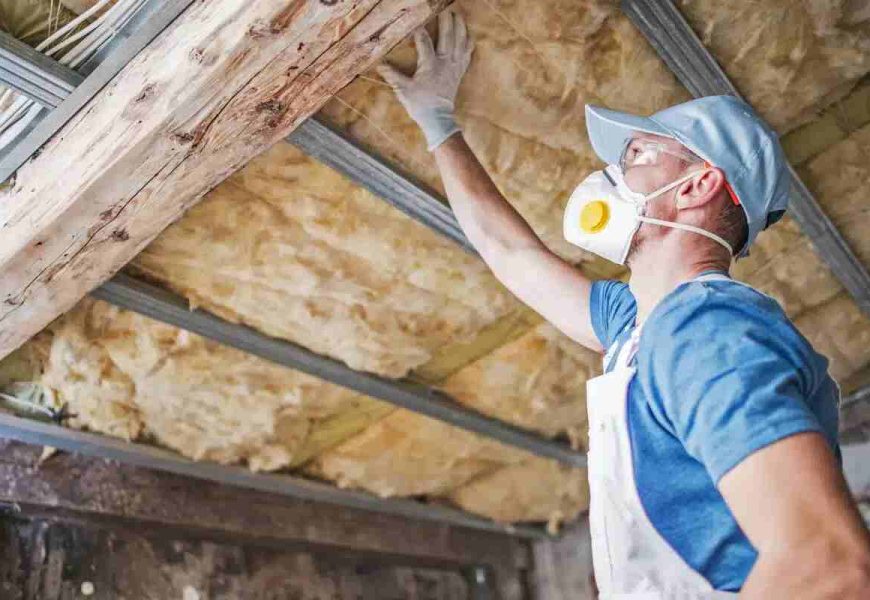Asbestos is a naturally occurring mineral known for its durability and resistance to heat, which made it a popular building material in the 20th century. However, as its hazardous health effects came to light, the use of asbestos in construction and other industries rapidly declined. Despite this, many homes, offices, and schools built before the 1980s may still contain asbestos. Proper handling and removal of asbestos is critical to safeguarding health. This article will guide you through identifying, managing, and safely removing asbestos in your property – tokohasil.
What is Asbestos and Why is it Dangerous?
Asbestos is made up of minute fibers that can become airborne and inhaled if disturbed, these fibers can lodge themselves in the lungs and other tissues, leading to serious health conditions, such as:
- Asbestosis – A persistent lung condition resulting in lung tissue fibrosis.
- Lung Cancer – A significant risk for people exposed to asbestos over long periods.
- Mesothelioma – A seldom-seen but aggressive cancer that targets the linings of the lungs and abdomen.
Given these severe health risks, knowing how to handle asbestos safely is essential for maintaining a healthy environment.
Identifying Asbestos in Your Home, Office, or School
If your property was constructed before the 1980s, it’s possible that asbestos is present in various forms. Asbestos was commonly used in:
- Floor tiles
- Roof shingles
- Insulation materials
- Cement products
- Textured paints and coatings
The key to safely managing asbestos is understanding that it only becomes a health risk when the materials are disturbed or damaged, releasing fibers into the air. Therefore, visually inspecting for wear and tear or damage is critical. If you suspect that asbestos-containing materials are present, it’s advisable not to disturb them.
When to Call in Professionals
Handling asbestos requires specialized knowledge and tools to prevent exposure. If you believe your home, office, or school contains asbestos, it’s important to hire a licensed asbestos professional for testing and, if necessary, removal. An asbestos specialist will use fasteners and seals to safely handle asbestos-containing materials, preventing fiber release.
In addition to professional testing, here are some key situations when calling a professional is necessary:
Renovations or Remodeling – Any work involving cutting, sanding, or drilling into walls, ceilings, or floors could disturb asbestos fibers.
Damaged Materials – If asbestos-containing materials are frayed, cracked, or broken, they could release harmful fibers into the air.
Demolition – Tearing down parts of an old building without first checking for asbestos is a serious hazard.
Professional Tools for Asbestos Handling
The importance of specialized tools cannot be overstated. Professionals use fasteners and sealing devices that ensure asbestos materials remain contained and undisturbed. For example:
Encapsulation – Professionals may apply a sealant to asbestos-containing materials to prevent fiber release.
Enclosure – Surrounding asbestos materials with airtight barriers prevents them from being disturbed during construction or day-to-day activities.
Removal and Disposal – In some cases, asbestos materials need to be completely removed, requiring advanced tools like HEPA vacuums, respirators, and protective clothing.
DIY vs. Professional Asbestos Handling
It’s critical to recognize that asbestos removal is not a DIY task. Even minor exposure can result in serious health problems down the line. While some property owners may feel confident handling smaller tasks themselves, the safest route is always to hire trained asbestos abatement professionals. They have the skills, fasteners, and safety equipment necessary to contain and remove asbestos without posing a risk to themselves or others.
If asbestos removal is required in a school setting, it’s especially important to hire specialists. Children are more vulnerable to asbestos exposure, and strict guidelines exist for its removal in educational institutions.
The Importance of Choosing the Right Contractor
Hiring the right asbestos professional is key to ensuring safety. Look for contractors who are:
Licensed and Certified – Professionals should be certified by the relevant authorities in your area.
Experienced – An established contractor with years of experience in asbestos abatement is likely to handle the job more safely and efficiently.
Transparent – The contractor should explain the testing, handling, and removal process clearly and provide detailed information about the steps they will take.
Preventing Future Asbestos Hazards
Once asbestos has been properly handled, you’ll want to take steps to prevent future exposure risks. Regularly inspect older homes, offices, and schools for signs of wear and damage in areas where asbestos-containing materials may still be present. In addition:
Seal and protect asbestos-containing surfaces with the right fasteners and coatings.
Avoid drilling or sanding any areas where asbestos could be present.
Keep records of asbestos testing and removal for future reference, especially when selling or renovating your property.
Conclusion
Handling asbestos in your home, office, or school is a serious matter that requires careful attention to health and safety regulations. By understanding how to identify asbestos, when to hire professionals, and the importance of fasteners and tools in handling it, you can take the necessary steps to protect your property and its occupants. When it comes to asbestos, safety should always be the top priority – baut & mur.
















